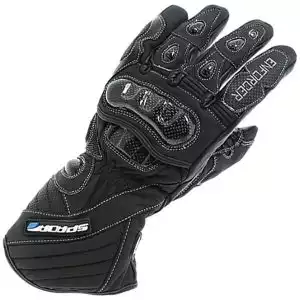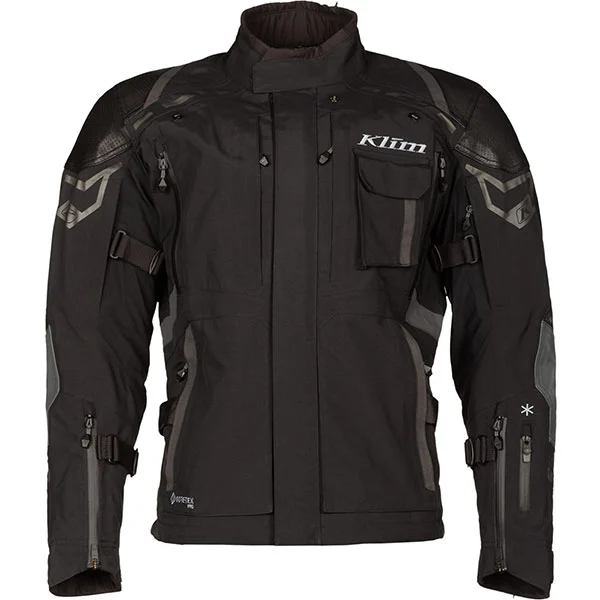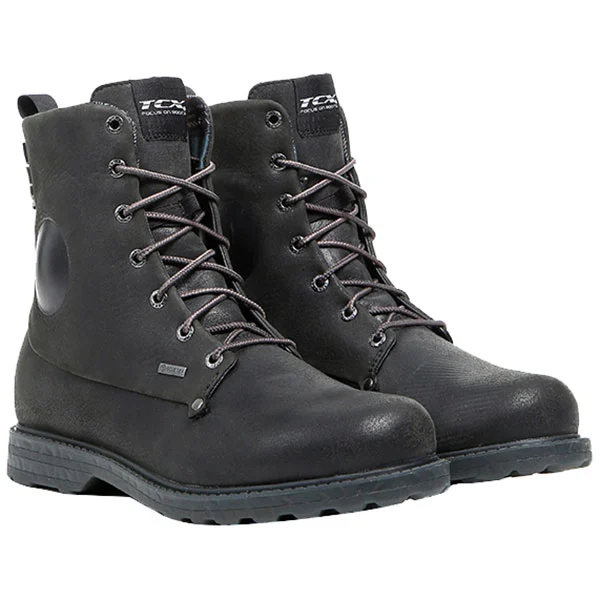Getting into motorcycles is the most exciting thing one can do, I remember when I took the plunge.
I spent hours, days, and weeks looking for the perfect first bike and then at all the dream bikes that I would later aim for.
However, it came as a bit of a surprise just how much other stuff you need to get out on the road, the motorcycle itself is actually the easiest bit.
It is so easy to overlook all the extra essentials you need to be safe out on the road because the excitement of getting your first bike and doing your CBT or DAS overshadows everything.
This is why we have pulled together a list of 5 essentials you need to be out on the road; followed by some recommended extras that will make your riding experience more comfortable.
Save Money On Your Motorcycle Insurance
- You could pay less than £195*
- Compare quotes from 25+ UK providers
- Fill in one form to compare top bike insurers
#1. Helmet
The absolute number one essential item you need to purchase as a motorcyclist is a helmet.
When I was working in a motorcycle clothing and accessory store and I had new riders come into the store to get kitted out, I would always ask them their budget, and then advise that the highest percentage of that budget should be allocated to their helmet.
The reason is that should a rider be in an accident on the road, it is much easier for the body to heal a broken leg or shoulder, head injuries however are far more difficult to fix and ultimately more devastating.
Fortunately, there are protective motorcycle helmets which will suit all riders, styles and budgets, the only downside these days is that it can be hard to narrow down your choice with so many options available.
The main types of motorcycle helmet are as follows:
- Full-face
- Modular/flip-up
- Open face
- Dual-sport
- Off-road
We have rounded up the best motorcycle helmets across all the different types to help you make an informed decision.
For all riders, I always recommend a full-face helmet as they offer the best protection and highest overall safety ratings.
Safety should be your priority when it comes to a motorcycle helmet, over and above everything else, a fashionable open face with a bubble visor might look the business on your new Harley but it offers no chin protection in the event of an accident.
Take a look at our 11 Safest Motorcycle Helmets post which also has a buyer’s guide to help you pick a protective helmet.
Eye Protection
Aside from the helmet’s number one job of protecting your head, they also serve the purpose of protecting your eyes from the wind and debris that can flick up from the road etc.
Most full face and modular helmets will come with a visor that drops down and protects your eyes and face.
However, some have the option to use goggles or glasses instead of a standard visor, this is most common on open face and retro style full face helmets.
The Shoei Ex-Zero is one such example of a retro helmet, that does have a drop-down internal visor but can also be worn with goggles.
If your helmet does lack in the visor department or perhaps you prefer the wind in your face, you should always supplement your lid with some glasses or goggles to protect your eyes.
If some debris/a fly/ a stone etc gets in your eyes while riding it can be incredibly distracting and downright dangerous on the road.
Check out our favourite motorcycle goggle options.
#2. Gloves
Next up as an absolute essential is a pair of riding gloves.
The most important thing here is that you get a pair of gloves that fit your hands perfectly and I hate to say it but if you are riding all year and in varying weather the chances are you are going to end up owning several pairs of gloves.
A well fitting pair of gloves cannot be appreciated enough, trust me.
I have ridden with gloves where the fabric at the tips of the fingers is irritating to the point it is distracting when riding; I have worn gloves that are just too big and therefore the controls on the bike were difficult like working my indicators; I have also experienced gloves that are too small and when I managed to rip them off at the end of the ride my hands were swollen and sore.
To avoid any of this make sure you know how to size your hands properly to find gloves that fit properly, check out our glove sizing guide.
Don’t be tempted to ride without gloves even in the Summer when the weather is nice and warm, there are gloves built for hot and cold temperatures so there is no excuse to not keep your hands protected.
Read through our reviews as a start point:
#3. Jacket
The next thing you should be looking for is a riding jacket.
There are several types of motorcycle jackets on the market, while each is produced to protect the rider they all serve different purposes:
- Textile Jackets – Usually made from a Cordura type mix with Kevlar or woven cotton, textile jackets are great for all year riding and often have removable waterproof and/or thermal liners, along with ventilation systems.
- Leather Jackets – The most traditional style riding jacket is made from leather and they come in a variety of styles from retro, cruiser, sports to suit all riders. Leather generally is not great in wet weather.
- Mesh Jackets – These are a type of textile jacket built for Summer riding, they usually have large mesh panels on the front and back of the jacket to allow excellent airflow while still being protective.
- Airbag Jackets – The most recent addition to the market are jackets fitted with an airbag that deploys when an accident occurs to protect the rider from serious injury. Airbags can be found in both textile and leather jackets as well as in separate vests altogether.
The key to buying a motorcycle jacket is to think about when you are going to be riding and in what conditions.
If you are going to be commuting all year, then thinking about a Gore-Tex Waterproof jacket may be your best bet so you are shielded from the elements.
For example, the Klim Kodiak jacket is my favourite waterproof riding jacket, as it offers Gore-Tex waterproofing along with an excellent ventilation system to open up the airflow in warmer weather.
Whereas if you are opting for a sportsbike, then a leather jacket might be better suited to match the style and offer up features like heavier duty armour or speed humps for aerodynamics.
The most important thing to look out for in a jacket is its protective features:
- Is it equipped with CE approved shoulder, elbow and back armour as a minimum? If not can it be fitted with armour?
- Are the materials strong, built to withstand a slide and protect your skin?
It is worth noting that for a really long time only jackets made from leather were considered to be really safe and the most protective garments.
This has changed with the technology and materials used in the construction of textile garments, they are now widely regarded to be just as protective and safe as their leather counterparts.
So the decision between the two comes down to personal preference and style more than anything now.
#4. Trousers
To back up your jacket you are going to need some trousers to offer your legs some protection.
There are also a whole host of different types of trousers that are up to the task and it largely comes down to what you need out of them just like your jacket.
If you want some textile trousers to match your textile jacket, or commuter all-year riding needs then you should check out our best textile trousers post.
Check out our picks for the best leather trousers if you want to with the classic look.
Many manufacturers will offer trousers that match specific jackets in their product lines or they will have zips that connect jackets and trousers across their range. Being able to connect your jacket and trousers is super useful for keeping your lower back covered.
Having the two connected will keep you protected from the wind and rain, but more importantly, will protect you more in a slide as you will have protection all over without the risk of your lower back or stomach being vulnerable.
Kevlar jeans have become very popular in recent years offering a more casual look, but still being protective.
The Kevlar offers up slide protection while there are usually hip and knee armour pockets to offer impact protection too just like other motorcycle trousers.
In our Best Motorcycle and Kevlar Jeans post, our buying guide is worth a read to get into Kevlar jeans and trousers.
There are many tests that have proven Kevlar riding jeans to be just as abrasion resistant as other motorcycle trousers, and providing they are armoured can be very protective.
Leggings for women riders have become extremely popular and just like Kevlar jeans offer great protection. Read about my favourite jeans and leggings for women.
#5. Boots
It would be no use protecting the rest of your body and then slipping on a pair of Converse slip ons to protect your feet.
Motorcycle boots are essential to both protect your feet when riding and to provide you with sufficient grip for the road surface and control of the motorcycle.
Boots aren’t just there to protect you in an accident that occurs when you are riding. Many new riders particularly will tell you how they have dropped their bikes when stationary and in doing so they have been tipped out of the saddle.
It happens, even to the most experienced riders.
Having a pair of boots that offers good ankle protection will be the difference between a bit of a sore ankle and a broken one when the bike lands on your foot.
As with everything else, there are styles to suit every rider and their budget.
What you want to make sure of is that they fit properly, are comfortable, provide sufficient grip and ideally try them on your bike to make sure you can use your controls easily etc.
You can get long boots that come up over your calves or short boots and even trainer style riding boots.
If you are after a casual look so you can comfortably walk around off the bike and not be lugging around big traditional biker boots, then take a look at our Best casual motorcycle boots guide.
Just because you might have a slightly tighter budget doesn’t mean you have to go without and we have covered some of the best budget boots just for this reason.
My first pair of motorcycle boots were £39.99, they were leather, had a solid sole, ankle protection and 5 years later are still comfortable and usable.
Recommended Extra Items
So there you have the 5 essential items you should get when starting your motorcycle journey, but here are some extra items to consider that will help you on your ride.
Ear protection
Motorcycles are loud, that is part of why we love them right?
However, when you are riding for a few hours, it can get a bit much, leaving you with earaches and headaches at the end of your ride.
If your helmet isn’t quite drowning out the noise enough, or your exhaust is just particularly loud then you might want to pick up some earplugs.
Whether you go for some simple foam earplugs or specially moulded ones, your ears will thank you and your riding experience will be enhanced by adding them to your riding arsenal.
The best quality earplugs will drown out the road noise but allow important sound to get through such as from your comms kit speakers, or police sirens etc.
Basic Tool Kit
Having a basic tool kit on the bike is always a good idea along with including a puncture repair kit.
You should get clued up on basic maintenance and quick fixes for when things go wrong when out on the road.
Being able to repair a puncture or tighten some bolts is invaluable knowledge when you are stuck in the middle of nowhere with no phone signal.
We have selected some of the best options for motorcycle tool kits and puncture repair kits for you to look at.
Communication Kit
Motorcycle intercom and bluetooth headsets have increased tenfold in popularity, they allow you to communicate with other riders, use your phone via voice controls, listen to music and hear sat nav instructions.
For brand new riders I would suggest a comms kit isn’t necessary and can be distracting, you are better off focusing on the road alone and that is about it.
However, adding one to your kit down the line is a great idea and there are options for all riders, from those that just want to connect to their phone; those that want to talk with a pillion or those who want to talk to a group of other riders.
Check out our Best Motorcycle Intercom Bluetooth Headset post for the latest and greatest options available.
Sat Nav
If you are looking to branch out that bit further than your local roads, it might be worth investing in a motorcycle sat nav.
With many of the motorcycle specific sat navs you can set motorcycle friendly routes, avoiding motorways, traffic and opt for the twisty country roads we all love.
USB Charger
A motorcycle USB charger is one of those small but infinitely useful gadgets that can keep your phone or sat nav charged so you are never out of touch or lost.
The key with a charger is to make sure it can be turned off so it doesn’t drain your battery when not in use, otherwise keeping your battery on a trickle charger when parked up in the garage will counter this problem.
Luggage
If you don’t want to constantly ride with a backpack, getting your bike to do the hard work by carrying your stuff is easier now than ever.
There are so many different luggage options for motorcycles from hard luggage to soft luggage, magnetic tank bags to those that clip on.
There is definitely a combination for every rider and every need.
Take a look at our motorcycle luggage section to see what options you have.





